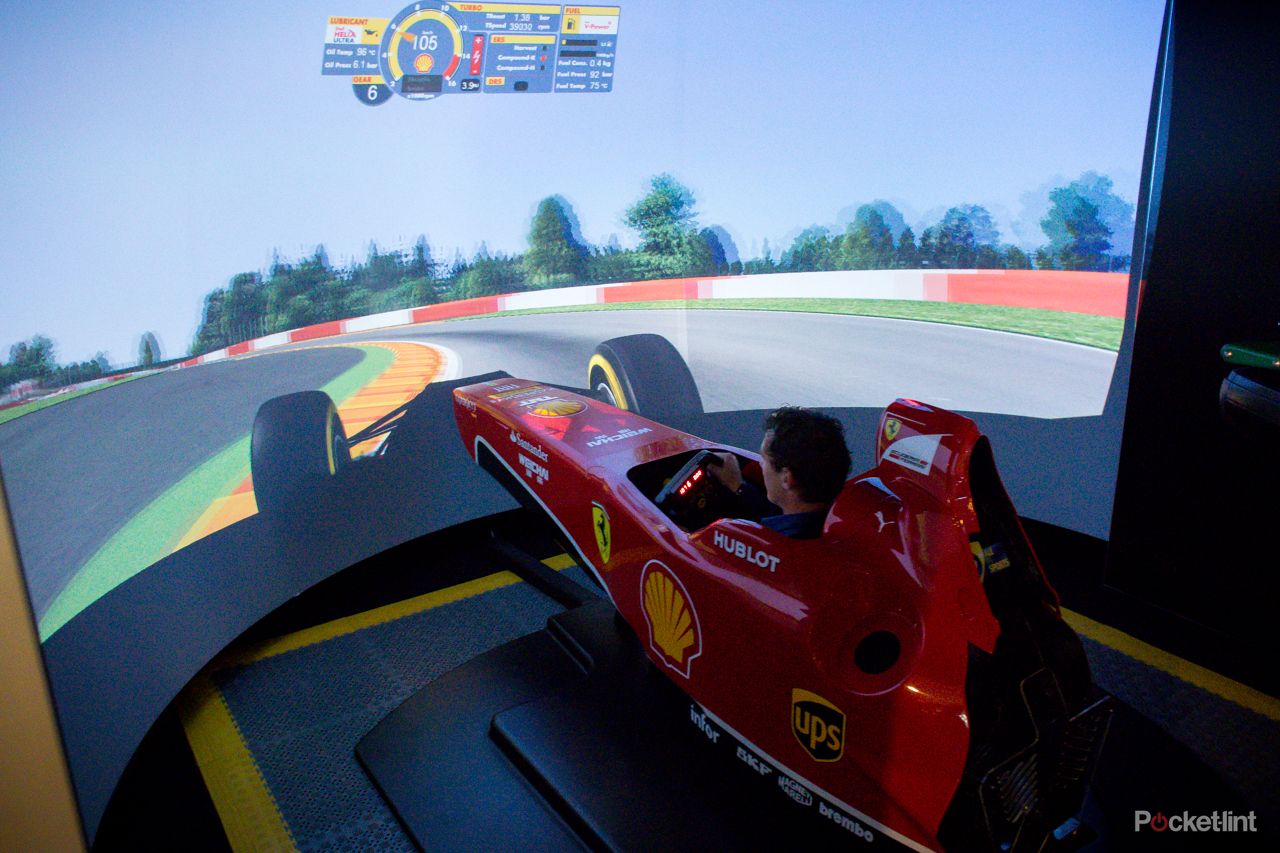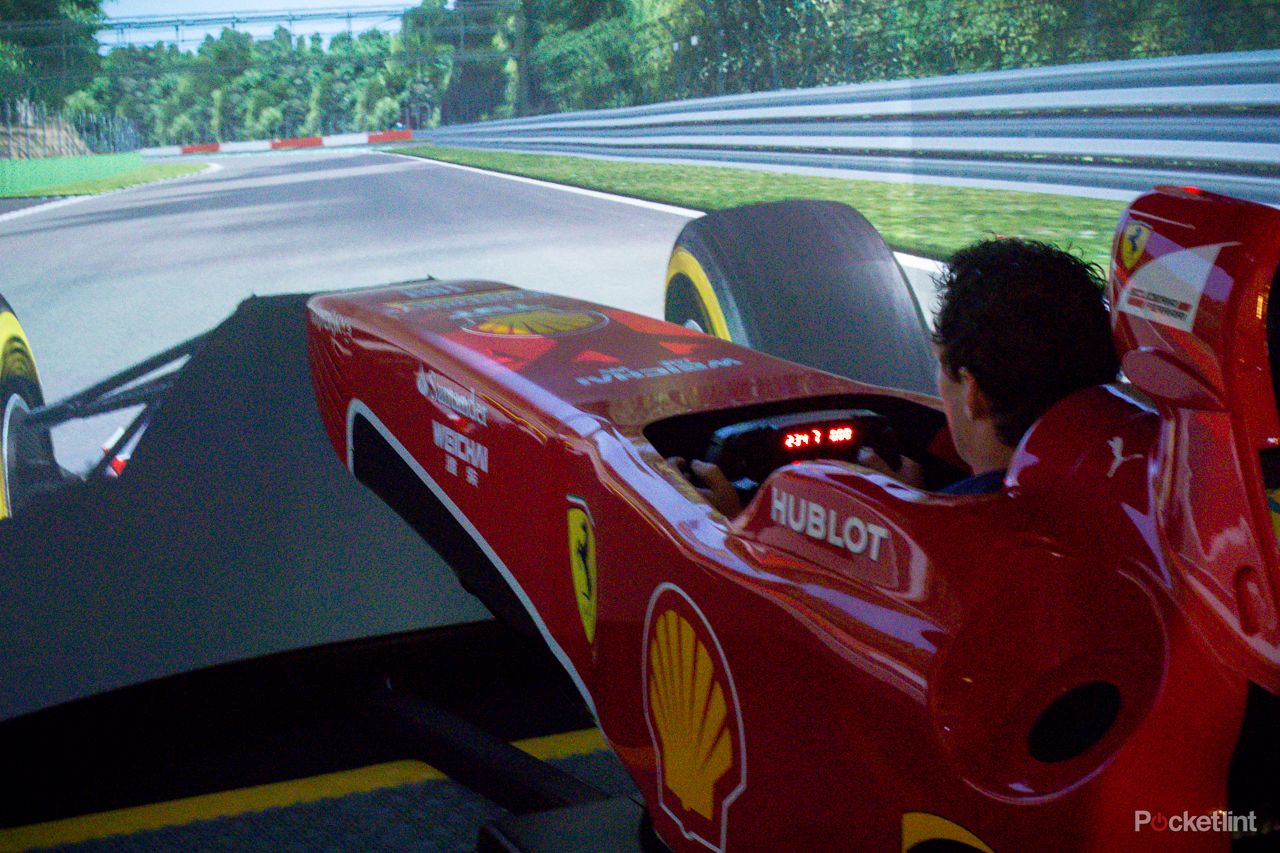As part of a trip to the Belgian Grand Prix with Shell, Pocket-lint was invited to try its hand at driving a Ferrari Formula One car.
Luckily for a majority of the people in the vicinity however, this was in a professional simulator rather than the real thing, but in many aspects it is very similar. The chassis is actually built from a spare part of Alonso's F14 model car. The steering wheel is identical in weight and design to the real thing. The pedals are identical, with the brake being a pressure pad rather than actual metal pedal. And the overall experience is terrifying, albeit less dangerous.
The simulator cost £500,000 to build, has a motion plate that moves in multiple directions to simulate direction and bumps - such as going over the rumble strips on a corner - and Alonso even has one in his own home. This particular model follows Shell around the world, to events and F1 races, so that visitors can get a slice of the action and try to beat the professionals' times on the real tracks. Needless to say we didn't. Far far from it, in fact.
We're actually dab hands at each generation of Codemasters' F1 games on Xbox 360 or PS3 so were less nervous than others about to take a ride, but we soon found our during our two laps just how dramatically different the console games and this more lifelike simulator are. For a start, we wuss out more than often on the games and set gears to automatic (especially when playing with a joypad in favour of a steering wheel accessory). The Shell Professional Simulator Experience, to give it its full name, has gear shifts on the wheel's paddles, like the real thing, and as we don't usually drive around the Circuit de Spa-Francorchamps - which was laser measured for the virtual version - we had no idea on what gear we needed to be in at what time.
READ: Shell Oculus Rift V-Power demo shows why Facebook was so keen to buy VR company
Luckily, one of the Shell representatives was on hand to talk us through our laps, giving us advice on gear downshifting when we approached each corner. They did this for all visitors over the race weekend, although rarely did we hear them screaming "brake" quite as often as with us.
Some we spoke to after their laps said that they found the steering to be harder than they thought. We didn't, it seemed incredibly responsive and the only time when we had to put considerable effort into turning the wheel was we we had to leave the pits initially and at the Bruxelles hairpin corner. The rest of the time the steering felt natural. What we had a real problem with, however, was braking, hence our adviser's increasing loudness.
Perhaps it didn't help that we were wearing crepe-soled Clark's Originals Wallabies - the shoe equivalent to tying pillows to the bottom of your feet - but we couldn't feel the brake at all. Another Shell employee had told us that when we brake we have to brake really hard, but it wasn't for the want of trying. We just didn't quite realise what "really hard" meant. We now know it means "impossibly, unbelievably, leg-strainingly hard". And we hard to make that last adverb up.
Needless to say that because of our braking issues, we didn't do that well. In fact, we did rather badly indeed. We crashed. Twice.
READ: What makes F1 drivers tick? Marc Gené takes us for a scare ride in a Ferrari F12 Berlinetta
The best time of the day was a fraction of a second over two minutes (the real-life Spa lap record is one minute 47 seconds, so that's not bad at all) and was set by ex-Pocket-linter Hunter Skipworth. Our time was three minutes 16 seconds. And that was our first learning lap as we didn't even finish our second "hot" lap. We'd like to say we parked it neatly before getting out of the car, others would say we went headfirst into a wall. Either way, that was the end of that.
What did we learn? Well, firstly, don't try to drive an F1 simulator in clown shoes. And secondly, never, ever let us anywhere near the real thing.
The Shell Professional Simulator Experience was devised to give first-hand demonstrations of how the Shell V-Power fuel used by the Ferrari F1 team, along with Shell Helix Ultra lubricants, can help improve professional racing performance.


